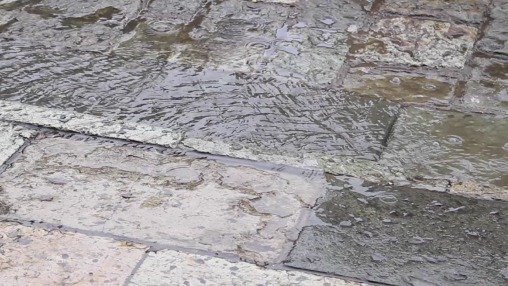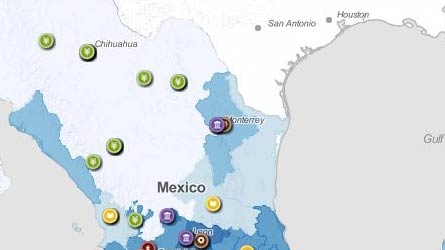Results
The Bank’s programmatic engagement on DRM, including an ongoing Reimbursable Advisory Service (RAS), is focused on: (i) consolidating our technical advice on disaster risk financing and assist the GoM on the development of a cost-efficient strategy for managing disaster-related fiscal risk at the federal level; (ii) extending Mexico’s disaster risk financing and insurance strategy to the State level; and, (iii) expanding the opportunities to strengthen the integration of risk reduction policies in territorial and urban development planning. During 2012, the Bank supported the Government of Mexico to position DRM as a priority topic for the G20 agenda. Some results of this engagement are:
- Technical analysis of the Federal Disaster Risk Financing and Insurance Strategy (October 2013);
- Preliminary results of the feasibility study of a joint mechanism for the financial protection of Mexican States against natural disaster (June 2013);South-South Exchange Seminar on Disaster Risk Financing and Insurance in Santiago de Chile under the framework of the Regional Platform for Disaster Risk Reduction (November 2012);
- Issuance of the MultiCat Mexico 2012 (October 2012);
- Publication of the FONDEN: Mexico’s Natural Disaster Fund – A Review (July 2012);
- Special Joint G20 Publication by the Government of Mexico and the World Bank on Improving the assessment of disaster risks to strengthen financial resilience (June 2012).
Bank Group Contribution
- Reimbursable Advisory Service (RAS) in Disaster Risk Management with two components, the feasibility study of a joint mechanism for the financial protection of Mexican States against disasters and an assessment and monitoring of public investments in prevention and disaster risk reduction in Mexico. Around US$520,000.
- Knowledge Service: Technical Review of the Disaster Risk Financing and Insurance (DRFI) strategy. Bank Budget (BB) FY12: US$70,000. FY13: US$50,000. FY14: US$15,000. Co-financing DRFI Program FY12: US$25,000.
- G20 Initiative in Disaster Risk Management fully funded by the Global Facility for Disaster and Recovery (GFDRR). No BB funding allocated to the team.
- Sovereign disaster risk financing and insurance: better evaluation and evidence: The GFDRR and the UK Department for International Development (DFID) have partnered to design, test and finalize a framework for quantitative ex-ante appraisal of sovereign DRFI instruments, to both assess the likely effectiveness, efficiency and impact of current and potential instruments, and to generate new evidence in this area. TF resources to be confirmed
- Integration of DRM considerations into urban planning (aligned with the Urbanization Review). BB FY14: US$20,000.
- Publication of R-FONDEN: Mexican catastrophe risk model for financial decision making (TF)
- Knowledge sharing platform on DRFI: S-S exchange with Philippines and Colombia under preparation.
Partners
The Latin America and Caribbean Regional Disaster Risk Management and Urban Unit (LCSDU) has a partnership with the the Disaster Risk Financing and Insurance Program (DRFIP), joint program between the Global Facility for Disaster Reduction and Recovery (GFDRR) and the Finance and Private Sector Development Department (FPD). In the dissemination of results, the team has collaborated with the United Nations International Strategy for Disaster Risk Reduction (UN-ISDR). This cooperation included the presentation of the RAS preliminary results work at a UN-ISDR/Government of Mexico Workshop in San Cristobal de las Casas, Chiapas in September 2012, as well as contributions to the 2013 Global Assessment Report outlining some the preliminary findings of the RAS.
As part of the engagement supporting the Government of Mexico (GoM) to position DRM on the G20 agenda, the Bank coordinated closely with the Organization for Economic Cooperation and Development (OECD) to bring together the experience from developing and developed countries to best position DRM as a priority topic under the G20 Mexican Presidency in 2012.
Moving Forward
The World Bank is supporting Mexico to shift from a reactive approach to disaster to a proactive disaster risk management approach. This is also developed as one pillar of a larger coordinated comprehensive approach to fiscal risk management in Mexico in partnership with the Poverty Reduction and Economic Management Network (PREM), the Treasury Department and the Latin America and Caribbean Agriculture and Rural Development Unit (LCSAR). The team is increasingly bringing disaster, fiscal, financial and agriculture risk management approaches together. This comprehensive and programmatic support will be crucial to help the client advance and to highlight the comparative advantage of the Bank by bringing together expertise across sectors.
Beneficiaries
While the direct beneficiaries of this engagement are the Ministry of Finance (Unit of Insurance, Pensions and Social Security),the Ministry of Interior (General Coordination for Civil Protection) and the Mexican States, the ultimate beneficiaries are the middle- and low-income households in the country. Efficient fiscal protection of the state against natural disasters ultimately ensures that limited government resources in the aftermath of a disaster are available to support low-income households and quickly rebuild public infrastructure.

